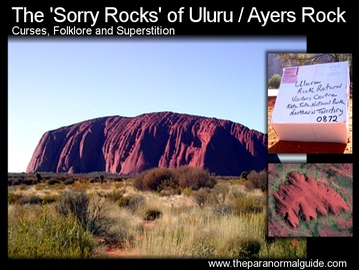
Uluru is Australia's best known natural wonder. Culturally significant to the Anangu people, it is asked that you take nothing from the site.
However, this is not always heeded and bad things can happen to those who disrespect the site.
Discovery of the monolith - Uluru
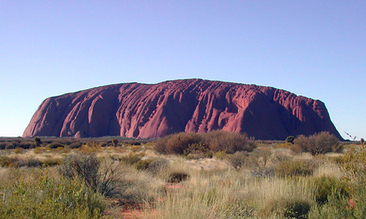 Uluru / Ayers Rock
Uluru / Ayers Rock Although evidence shows that the aboriginal people had settled in the area more than ten thousand years ago, it was only discovered by Europeans in 1873.
That year, in April, William Christie Gosse set out to find a route from central Australia to Perth. It was during this exploratory overland travel that Gosse first sighted a large monolith in the middle of the desert. He named this formation 'Ayers Rock', in honour of the Chief Secretary of South Australia, Sir Henry Ayers.
Mr E.S. Berry, second-in-command of the expedition, was the first European to climb Ayers Rock.
News did not reach civilisation till late in December, after the expedition was forced to turn back due to dwindling supplies and water.
On the 19th of December, the Western Australia Exploration Party arrived, exhausted, at a telegraph station. Three days later, after some rest Gosse telegraphed out news of his discovery.
The Argus Wed 24th December 1873
Adelaide, Tuesday
"Mr Gosse, the leader of the Western Australian exploration party, telegraphs that he has discovered a rock 1,800ft. high, two miles long, and a mile wide, with a perpetual stream flowing from it. He named it " Ayers' Rock." He also found a range of hills and fine country."
It was not long before pastoralists tried settling the area, but frequent and violent confrontations between the Settlers and the local aboriginal tribes saw slow progress made. Uluru/Ayers Rock is of high spiritual significance to Arangu (meaning 'person' in Western Desert Language but generally attributed to 'Aboriginal Person').
Tourists Arrive
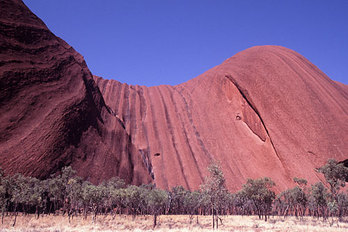 A sacred landscape.
A sacred landscape. In 1958 the land containing both Uluru/Ayers Rock and 'The Olgas' was excised from the Aboriginal Reserve and named 'Ayers Rock, Mount Olga National Park', giving full rights to the management of land, tourism and construction of facilities to the Northern Territory Reserves Board.
It was not until the mid 1980's that the Australian Government returned ownership of Uluru/Ayers Rock to the local Pitjantjatjara Aborigines.
However this was done under the agreement of a 99 year lease given to the National Parks and Wildlife Agency.
A Curse?
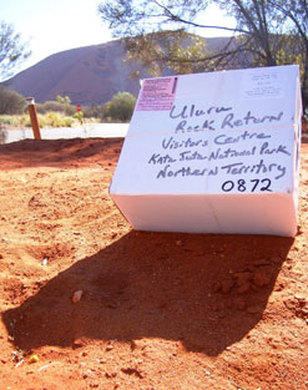 A package containing 'sorry rocks'.
A package containing 'sorry rocks'. This story has been added to the page as it is something much more sinister. There seems to be a curse put on those who remove rocks and stones from the immediate vicinity.
Since the 1970's, one package arrives daily (on average) at the National Park Ranges offices, containing a rock that had been removed by someone who has visited the park. Accompanying notes generally contain an apology, but others detail specific tragic events that have befallen the taker of the 'souvenir'.
Deaths, divorces, emotional turmoil, vehicle accidents, illness and injury are some of the reasons people cite for returning these 'Sorry Rocks'. It should be noted that it is not just rocks that are returned but also sand, twigs, seeds and photographs.
Most of the rocks are smaller than your fist, but larger specimens have also been posted back to the site. A German family returned a rock weighing 9kg, the postage must have been massive, so the desperation to return the rock and lift their 'curse' must have been great. That specimen has only been beaten by the 32kg slab posted back from south Australia.
Respect this Ancient Land
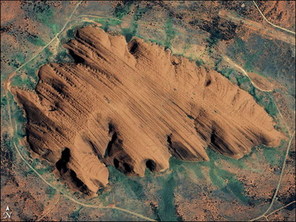 The worlds largest monolith.
The worlds largest monolith. The path that tourists use to climb to the top is also of great significance to the indigenous population. If you take a moment to search online, you can read about the creation period stories, I will not do them disrespect by posting an abbreviated version here.
*it should be noted that I am not implying that large numbers of deaths should result in a haunting.





 RSS Feed
RSS Feed
